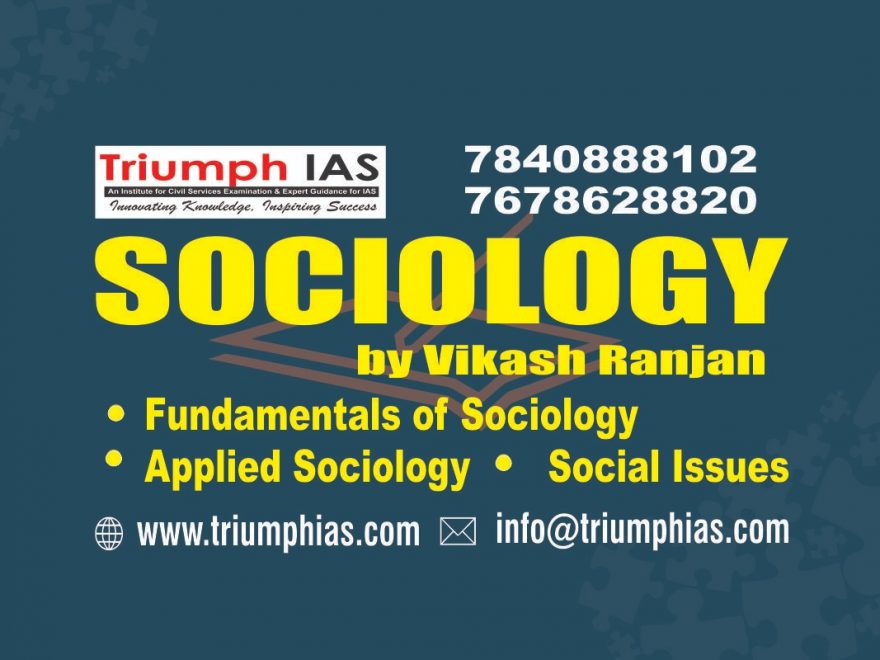Relevance: Sociology paper II: Tribal communities in India: Definitional problems
TRIBES:
Today, tribes are generally defined in terms of various general features rather than in the form of a fixed definition or identity and are thus, defined as a group of individuals with a shallow history – at least a recorded one, indigenous in nature, having a common name, having a particular territory, tied by close bonds of kinship, practicing endogamy, having distinct customs, rituals and beliefs, simple social ranking and political organisation and common ownership of resources.
Historically, tribes have been addressed by different authorities by different names like Adivasi, aborigines, primitives and backward Hindus. Definitional problem of tribes deals with two interrelated problems
- Problem of defining the tribes and
- Evolving an understanding of tribes in the Indian context.
- During the British period, the word tribe was used by administrators to understand the numerical strength of different cultural communities. Early British administrator-anthropologists did not make much distinction between caste and tribe groups as the primary difference was only in terms of the mode of production and style of settlement. They viewed the whole Indian society in terms of a single community that was largely inward looking.
Problems in Defining Tribals on the Basis of Exclusiveness
- Sahlins writes that the term “tribal society” should be restricted to “segmentary systems”. The segmentary system has relations on a small scale. They enjoy autonomy, and are independent of each other in a given region. We may observe this about the Santhals, Oraons and Mundas of Jharkhand or about the Bhils, Meenas and Garasias of Rajasthan.
- However, distinctions between ‘folk’, ‘peasant’ and ‘urban’ or between ‘tribal’, ‘folk’ and ‘elite’ are not very useful for the understanding of tribes in India. For example, the tribes of Jharkhand have been interacting and cooperating with each other, despite geographical barriers, problems of communication, relative cultural autonomy and economic self-reliance; as they faced a common external threat to their traditional system of land relations, economy and cultural autonomy. The Hindu Zamindars, Bengali moneylenders and the British administration exploited them, pushing them to the point of extinction and utter dehumanization. There was never inter-tribal isolation and cultural exclusiveness. The tribals of Jharkhand (Bihar) mobilized their members against their exploiters. They interacted with the administration, town elite and outsiders. The Jharkhand area, which contains numerous tribes of Bihar, West Bengal, Madhya Pradesh and Orissa, is a tribal cultural zone comprising several tribal subcultures. The Mundas, Oraons, Hos and Santhals, the major tribes of this region, depend upon forest produce, settled agriculture, employment in industries, coal mines and government jobs. Some have settled in towns, others are in villages, and some of the latter are economically very well off. Thus, tribal culture is in part a “peasant culture” and in part an “urban culture”.
- Tribal exclusiveness, intact tribal solidarity and tribal consciousness on the one hand, and dependence upon towns and cities, administration and mobilization against their exploiters and on the other, have existed simultaneously among the tribal people. Even the revival of tribal aboriginality has been expressed in the form of an instrument for protesting against the external intrusions and impositions of rules and regulations.
Mandelbaum mentions the following characteristics of Indian tribes:-
(1) Kinship as an instrument of social bonds.
(2) A lack of hierarchy among men and groups.
(3) Absence of strong, complex, formal organization.
(4) Communitarian basis of land holding.
(5) Segmentary character.
(6) Little value on surplus accumulation on the use of capital and on market trading
(7) Lack of distinction between form and substance of religion
(8) A distinct psychological bent for enjoying life.
- Tribes are relatively isolated from larger cultural influences, have a relative cultural homogeneity and a simple technology. They believe in spirits, magic and witchcraft. They have their own taboos which prohibit certain actions that are punishable by the community, by the supernatural, or by magical consequences. Large number of the tribes believes in animism, according to which all objects counselled – both animate and inanimate – are permanently or temporarily inhabited by spirits or souls. Often, an activity is believed to be caused by these spirits. Some spirits are worshipped and treated with fear and respect. Some scholars have maintained that animism was the earliest form of religion of the tribes. Many tribes believe in ancestor worship too.
Some general defining features of tribes in India are :
- Common name: Each tribe has a distinct name of its own through which it is distinguished from others.
- Common territory: Tribes generally occupy common geographical areas.
- Common language: Members of one tribe speak the same language. Each tribe has its own dialect, if not the script.
- Common culture: Each tribe has prescribed patterns of behaviour and festivals and deities to worship.
- Endogamy: Each tribe has the practice of marrying members within their own tribe.
- Political organization: All tribes have their own political organization. They have councils of elders to control members.

